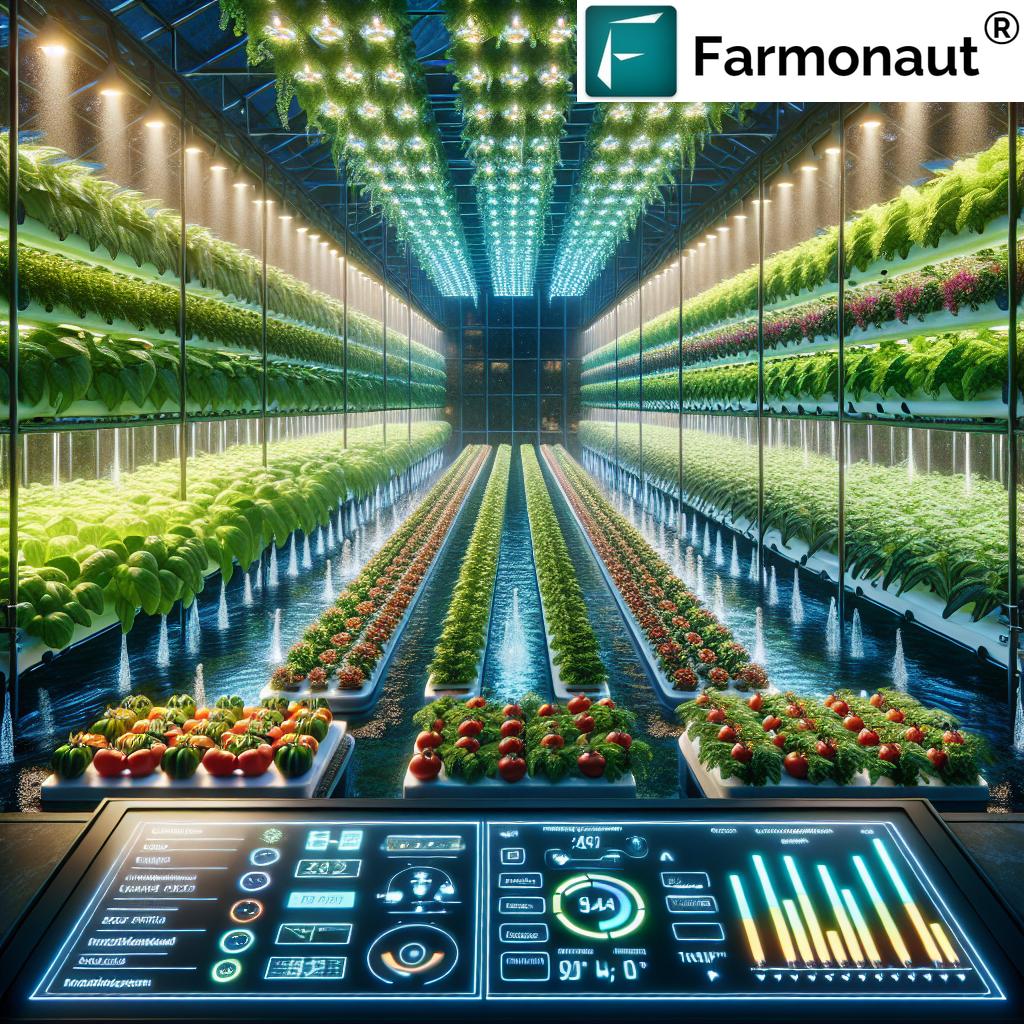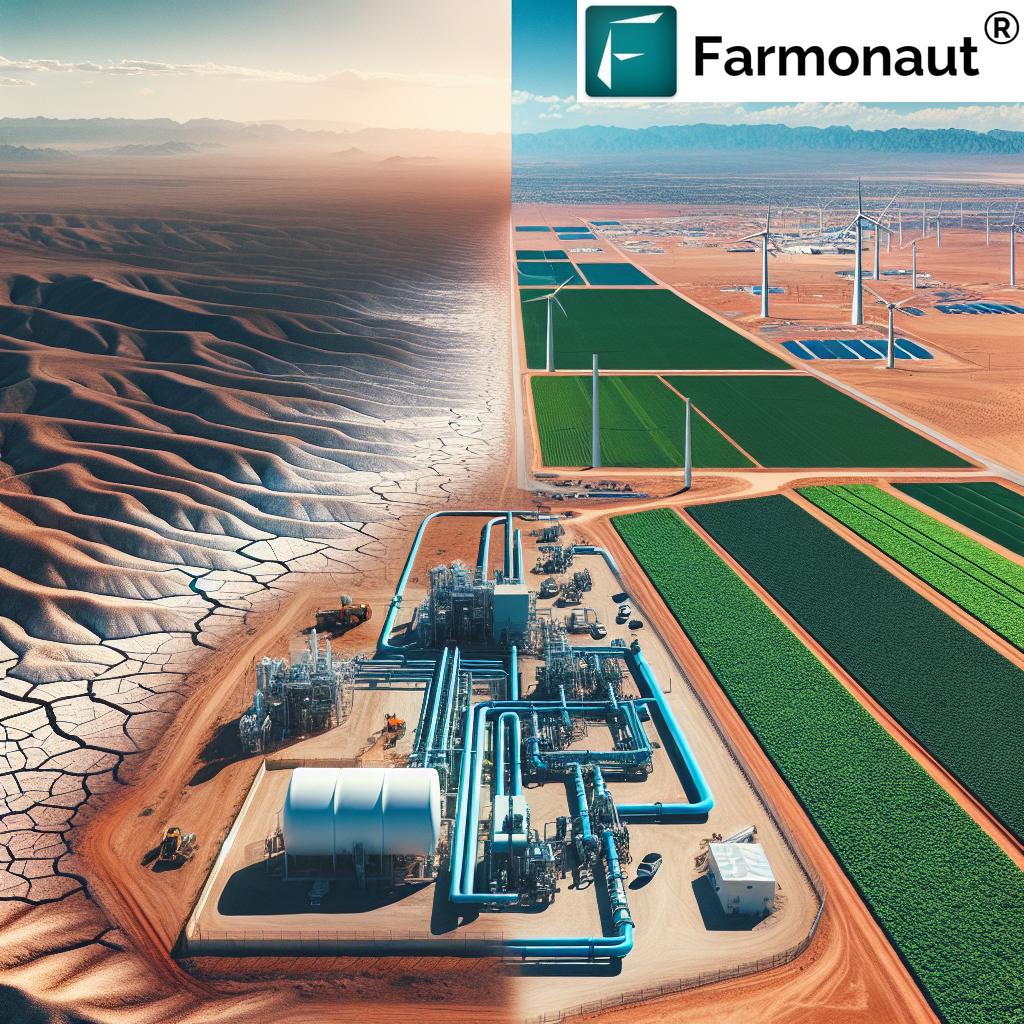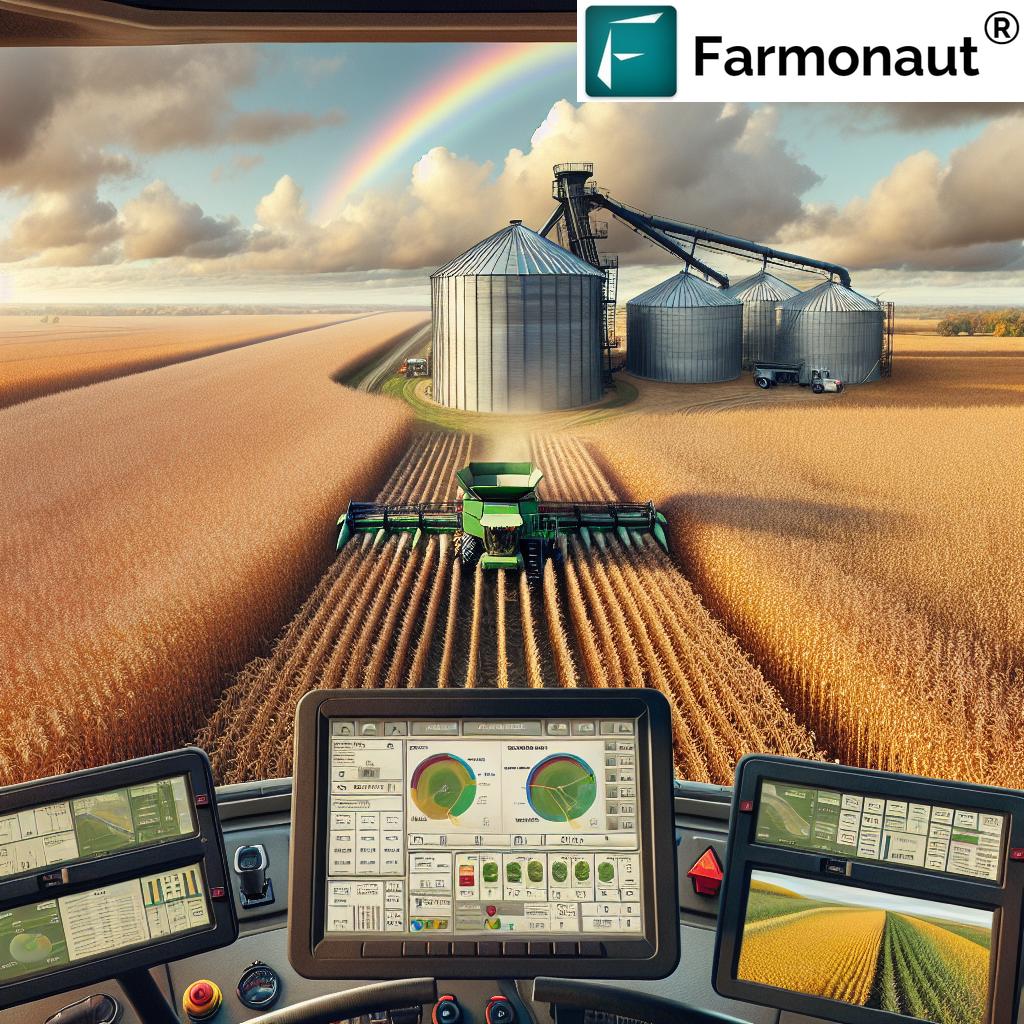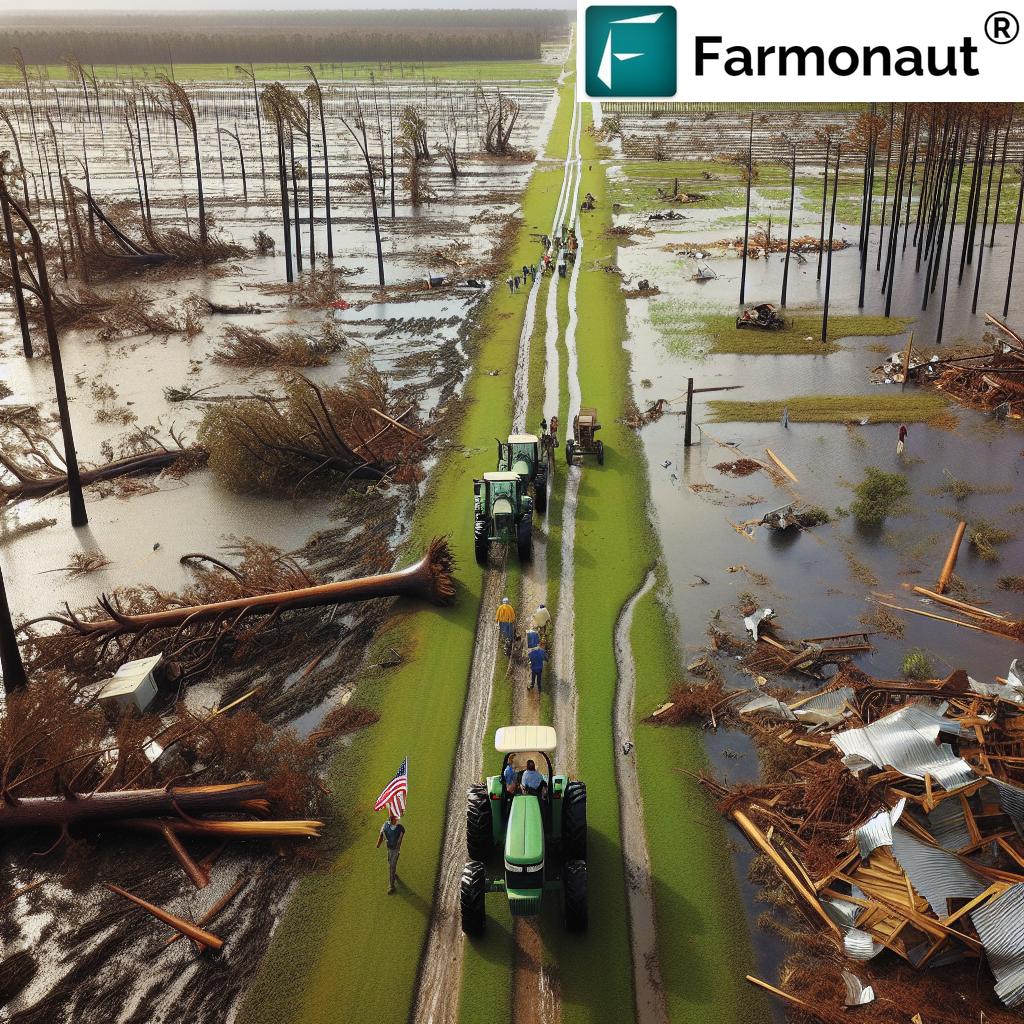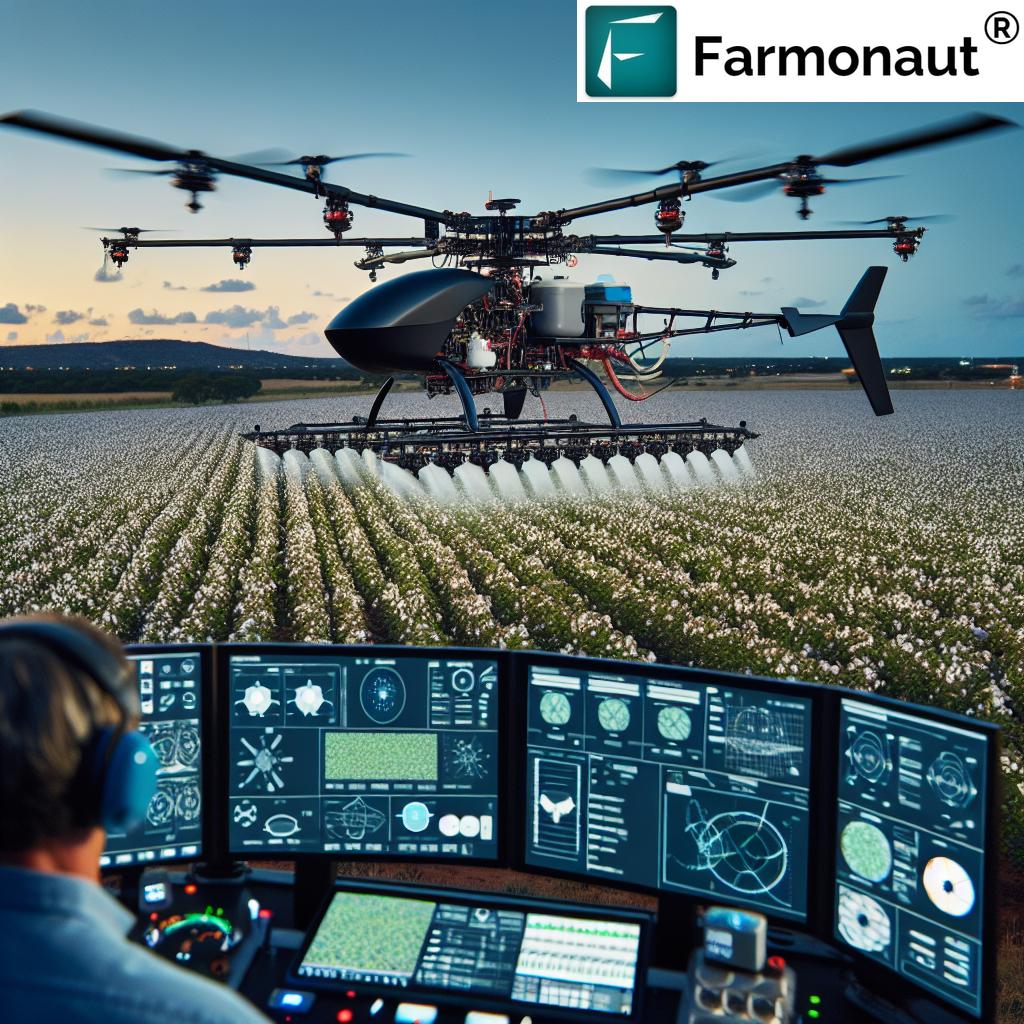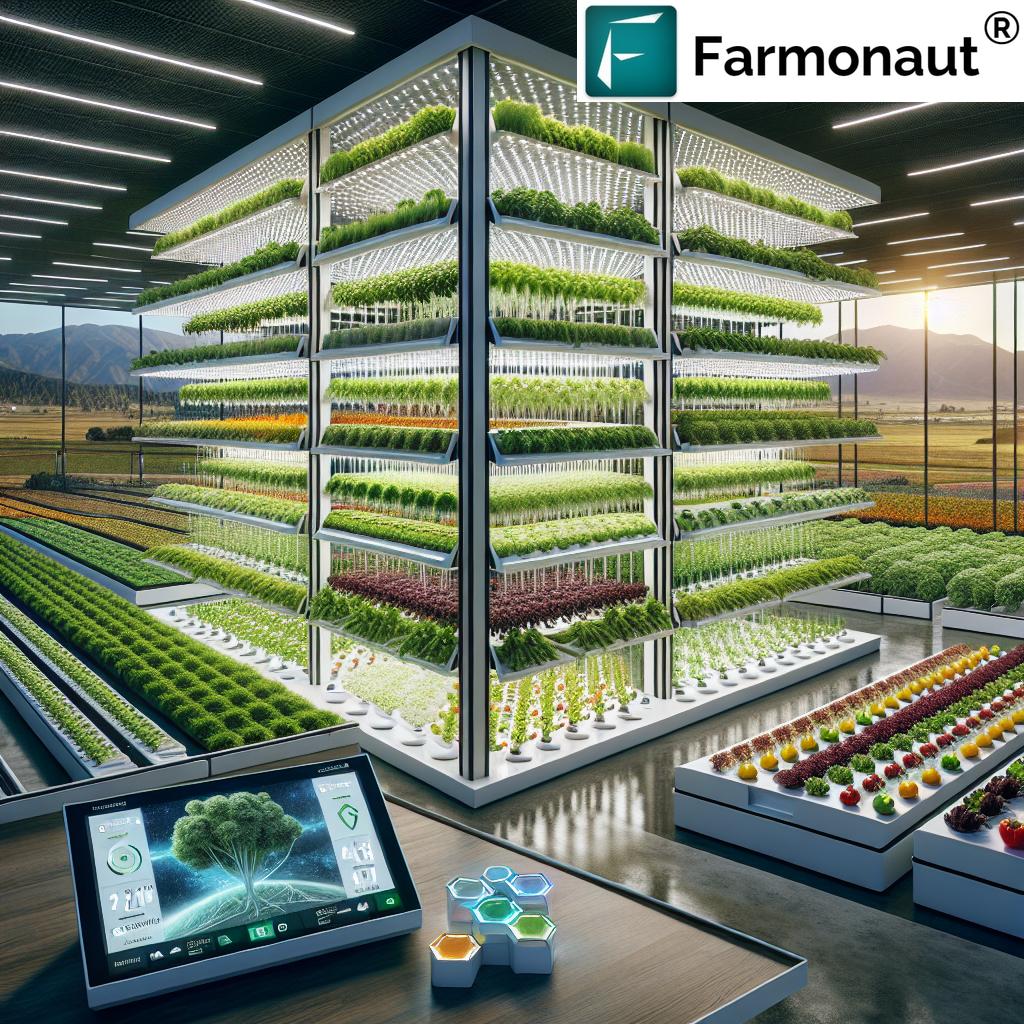AgTech Investment Soars: Farmonaut Explores 2023 Trends in California’s Agricultural Innovation Landscape

“Global AgTech funding reached $4.6 billion in 2015, highlighting the sector’s rapid growth and investment potential.”
Welcome to Farmonaut’s comprehensive exploration of the thriving agricultural technology (AgTech) landscape in California. As we delve into the innovative trends shaping the future of farming, we’ll uncover the exciting developments that are revolutionizing the industry. From indoor farming breakthroughs to urban agriculture advancements, we’ll examine how AgTech is addressing global food security challenges and creating new opportunities for farmers and entrepreneurs alike.
In this blog post, we’ll take you on a journey through the latest AgTech investment trends, emerging technologies, and groundbreaking research that are transforming California’s agricultural sector. As a leading provider of satellite-based farm management solutions, we at Farmonaut are excited to share our insights on these developments and how they’re shaping the future of farming.
The AgTech Revolution: A California Perspective
California has long been at the forefront of agricultural innovation, and the recent surge in AgTech investment is further cementing its position as a global leader in the field. Let’s explore some of the key trends and innovations driving this revolution:
- Precision Agriculture: Leveraging data and technology to optimize crop yields and resource use
- Indoor Farming: Developing controlled environments for year-round cultivation
- Urban Agriculture: Bringing food production closer to urban centers
- Vertical Farming: Maximizing space efficiency through innovative growing systems
- Satellite Technology: Enhancing farm management through remote sensing and monitoring
As we explore these trends, we’ll see how they’re not only reshaping California’s agricultural landscape but also influencing global food production practices.
AgTech Investment Trends in California
The AgTech sector in California has seen a remarkable influx of investment in recent years, with both established players and innovative startups attracting significant funding. Let’s take a closer look at the investment landscape across different AgTech sectors:
| AgTech Sector | Estimated Investment ($ millions) | Key Innovations | Major Players |
|---|---|---|---|
| Indoor Farming | 850 | LED lighting systems, Hydroponic solutions | Plenty, AeroFarms |
| Precision Agriculture | 1,200 | AI-driven crop monitoring, Autonomous tractors | Blue River Technology, Farmwise |
| Urban Agriculture | 300 | Rooftop gardens, Community-supported agriculture | Gotham Greens, Bright Farms |
| Vertical Farming | 600 | Aeroponics, AI-controlled growing environments | Crop One, Plenty |
| Satellite Technology | 450 | Multispectral imaging, Crop health monitoring | Planet Labs, Farmonaut |
This table provides a snapshot of the diverse and dynamic AgTech landscape in California. As we can see, significant investments are being made across various sectors, each contributing to the overall transformation of agriculture in the state and beyond.
Indoor Agriculture Technology: Revolutionizing Crop Cultivation
Indoor agriculture technology is one of the fastest-growing segments within the AgTech industry. By creating controlled environments, farmers can overcome traditional limitations such as climate and seasonality, enabling year-round crop production. Here are some key innovations in this space:
- Advanced LED Lighting: Tailored light spectra for optimal plant growth
- Hydroponic and Aeroponic Systems: Soil-less growing techniques for efficient resource use
- Climate Control Technologies: Precise management of temperature, humidity, and CO2 levels
- Vertical Farming Solutions: Maximizing space efficiency in urban environments
These technologies are not only increasing crop yields but also reducing water usage and minimizing the need for pesticides, aligning with California’s focus on sustainable agriculture.
Urban Farming Innovations: Bringing Agriculture to City Centers
Urban farming is gaining traction in California, addressing issues of food security and reducing the carbon footprint associated with long-distance food transportation. Some notable urban farming innovations include:
- Rooftop Gardens: Utilizing unused urban spaces for food production
- Vertical Greenhouses: Integrating agriculture into urban architecture
- Community-Supported Agriculture (CSA): Connecting urban consumers directly with local farmers
- Smart Container Farms: Repurposing shipping containers for compact, efficient farming
These urban farming solutions are not only producing fresh, local food but also educating city dwellers about agriculture and fostering community engagement.
Agricultural Technology Funding: Fueling Innovation
The influx of funding into the AgTech sector is driving rapid innovation and development. In California, we’re seeing investment coming from various sources:
- Venture Capital: Backing promising AgTech startups
- Corporate Investment: Large agricultural companies investing in R&D and acquisitions
- Government Grants: Supporting research and development in sustainable agriculture
- Impact Investing: Focusing on AgTech solutions with environmental and social benefits
This diverse funding landscape is fostering a vibrant ecosystem of innovation, with California at its epicenter.

LED Lighting for Agriculture: Illuminating the Future of Farming
LED lighting technology is revolutionizing indoor and greenhouse agriculture. The benefits of LED lighting in agriculture include:
- Energy Efficiency: Reducing electricity costs for farmers
- Spectrum Control: Tailoring light wavelengths to specific crop needs
- Heat Management: Minimizing heat output for better climate control
- Longevity: Providing reliable lighting with less maintenance
California-based companies are at the forefront of developing advanced LED lighting solutions for agriculture, contributing to more sustainable and efficient farming practices.
Women in AgTech: Driving Innovation and Diversity
“Women entrepreneurs are making a significant impact in AgTech, contributing to diverse innovations across the industry.”
The AgTech industry is seeing a growing number of women entrepreneurs and leaders who are bringing fresh perspectives and innovative solutions to agricultural challenges. Some areas where women are making significant contributions include:
- Sustainable Farming Practices: Developing eco-friendly agricultural solutions
- Food Safety and Traceability: Implementing blockchain and IoT technologies
- AgTech Education: Creating platforms to empower farmers with technology skills
- Vertical Farming: Innovating in urban agriculture and controlled environment systems
This increasing diversity in the AgTech sector is not only driving innovation but also addressing unique challenges faced by women farmers and agricultural workers.
GMO Regulations in Agriculture: Navigating the Landscape
Genetically Modified Organisms (GMOs) continue to be a topic of discussion in California’s agricultural sector. The state has implemented various regulations to address concerns and ensure responsible use of GMO technology. Key aspects of GMO regulations include:
- Labeling Requirements: Ensuring transparency for consumers
- Research Guidelines: Establishing protocols for GMO development and testing
- Coexistence Strategies: Managing the interaction between GMO and non-GMO crops
- Environmental Impact Assessments: Evaluating the long-term effects of GMO cultivation
As the AgTech industry evolves, so too does the regulatory landscape surrounding GMOs, with California often setting precedents for other states to follow.
Ocean Internet of Things: Innovations in Aquaculture
The concept of the Internet of Things (IoT) is extending to ocean-based agriculture, particularly in aquaculture. California’s coastline is becoming a testing ground for innovative offshore aquaculture technologies. Some exciting developments include:
- Smart Buoys: Monitoring water quality and environmental conditions
- Underwater Drones: Inspecting aquaculture infrastructure and fish health
- Automated Feeding Systems: Optimizing feed distribution and reducing waste
- Blockchain Traceability: Ensuring transparency in seafood supply chains
These ocean IoT applications are not only improving the efficiency of aquaculture operations but also contributing to more sustainable practices in seafood production.
Offshore Aquaculture Technology: Expanding the Horizons of Fish Farming
California is exploring the potential of offshore aquaculture to meet growing seafood demand while addressing environmental concerns. Key technologies in this field include:
- Submersible Fish Pens: Withstanding harsh ocean conditions
- Remote Monitoring Systems: Enabling real-time data collection and analysis
- Sustainable Feed Solutions: Developing alternative protein sources for fish feed
- Integrated Multi-Trophic Aquaculture: Combining multiple species for ecological balance
These innovations are positioning California as a leader in sustainable offshore aquaculture, balancing food production with marine conservation efforts.
Agricultural Innovation Showcase: California’s Leading AgTech Solutions
California’s AgTech sector is home to a diverse array of innovative solutions addressing various agricultural challenges. Some standout innovations include:
- AI-Powered Crop Monitoring: Using machine learning to detect pests and diseases early
- Robotic Harvesting Systems: Automating labor-intensive harvesting processes
- Precision Irrigation Technologies: Optimizing water usage through sensor networks and data analytics
- Blockchain for Supply Chain Transparency: Ensuring traceability from farm to table
These innovations showcase California’s role as a hub for AgTech development, attracting talent and investment from around the world.
Satellite Technology in Modern Farming: A Game-Changer for Agriculture
Satellite technology is revolutionizing farm management practices, offering unprecedented insights into crop health, soil conditions, and environmental factors. At Farmonaut, we’re at the forefront of this technological revolution, providing farmers with powerful tools for precision agriculture. Our satellite-based solutions offer:
- Real-time Crop Health Monitoring: Using multispectral imagery to assess vegetation health
- Soil Moisture Analysis: Optimizing irrigation strategies through remote sensing
- Yield Prediction: Leveraging historical data and AI for accurate forecasting
- Resource Allocation Optimization: Enhancing decision-making for fertilizer and pesticide use
By harnessing the power of satellite technology, farmers can make more informed decisions, reduce resource waste, and improve overall productivity.
Explore Farmonaut’s satellite-based farm management solutions:
The Role of AI in Agriculture: Transforming Decision-Making
Artificial Intelligence (AI) is playing an increasingly important role in agricultural decision-making processes. In California, AI applications in agriculture include:
- Predictive Analytics: Forecasting crop yields and market trends
- Automated Pest and Disease Detection: Using image recognition for early intervention
- Precision Farming: Optimizing resource allocation based on AI-driven insights
- Smart Irrigation Systems: Adjusting water usage based on AI analysis of multiple data points
These AI-powered solutions are helping farmers make more informed decisions, leading to increased efficiency and sustainability in agricultural practices.
Blockchain in Agriculture: Enhancing Traceability and Trust
Blockchain technology is making significant inroads in California’s agricultural sector, particularly in supply chain management and food traceability. Key applications include:
- Farm-to-Table Traceability: Providing consumers with detailed product origin information
- Smart Contracts: Streamlining transactions between farmers, distributors, and retailers
- Quality Assurance: Verifying organic and sustainable farming practices
- Food Safety Management: Enabling rapid response to contamination issues
By implementing blockchain solutions, California’s agricultural industry is increasing transparency and building consumer trust in the food supply chain.
The Future of AgTech in California: Trends to Watch
As we look to the future of AgTech in California, several trends are emerging that will likely shape the industry in the coming years:
- Integration of 5G Technology: Enabling real-time data transmission and analysis in rural areas
- Expansion of Vertical Farming: Addressing urban food security challenges
- Development of Plant-Based Alternatives: Meeting growing demand for sustainable protein sources
- Adoption of Autonomous Farm Equipment: Reducing labor costs and increasing efficiency
- Implementation of Regenerative Agriculture Practices: Focusing on soil health and carbon sequestration
These trends highlight the ongoing innovation in California’s AgTech sector and its potential to address global agricultural challenges.
Conclusion: California’s AgTech Revolution
As we’ve explored in this comprehensive overview, California’s AgTech sector is experiencing unprecedented growth and innovation. From indoor farming technologies to satellite-based crop monitoring, the state is at the forefront of agricultural innovation. The surge in investment, coupled with groundbreaking research and development, is positioning California as a global leader in sustainable and efficient farming practices.
At Farmonaut, we’re proud to be part of this AgTech revolution, offering cutting-edge satellite-based solutions that empower farmers to make data-driven decisions. As the industry continues to evolve, we remain committed to developing technologies that promote sustainable agriculture and food security.
The future of farming is here, and it’s being shaped by the innovative minds and technologies emerging from California’s vibrant AgTech ecosystem. As we move forward, the integration of AI, blockchain, and IoT technologies will continue to transform agriculture, creating a more sustainable and productive future for farmers worldwide.
Frequently Asked Questions (FAQ)
- What is AgTech?
AgTech, short for Agricultural Technology, refers to the use of technology in agriculture, horticulture, and aquaculture to improve yield, efficiency, and profitability. - How is satellite technology being used in agriculture?
Satellite technology is used for crop monitoring, soil moisture analysis, yield prediction, and resource optimization, providing farmers with valuable insights for decision-making. - What are some key benefits of indoor farming?
Indoor farming offers year-round crop production, reduced water usage, minimal pesticide use, and the ability to grow crops in urban environments. - How is AI transforming agriculture?
AI is being used for predictive analytics, automated pest detection, precision farming, and smart irrigation systems, helping farmers make more informed decisions. - What role does blockchain play in agriculture?
Blockchain technology enhances traceability in the food supply chain, enables smart contracts, and helps verify sustainable farming practices.
For more information on how Farmonaut’s satellite-based solutions can benefit your agricultural operations, visit our web app or explore our API for custom integrations. You can also find detailed information in our API Developer Docs.











